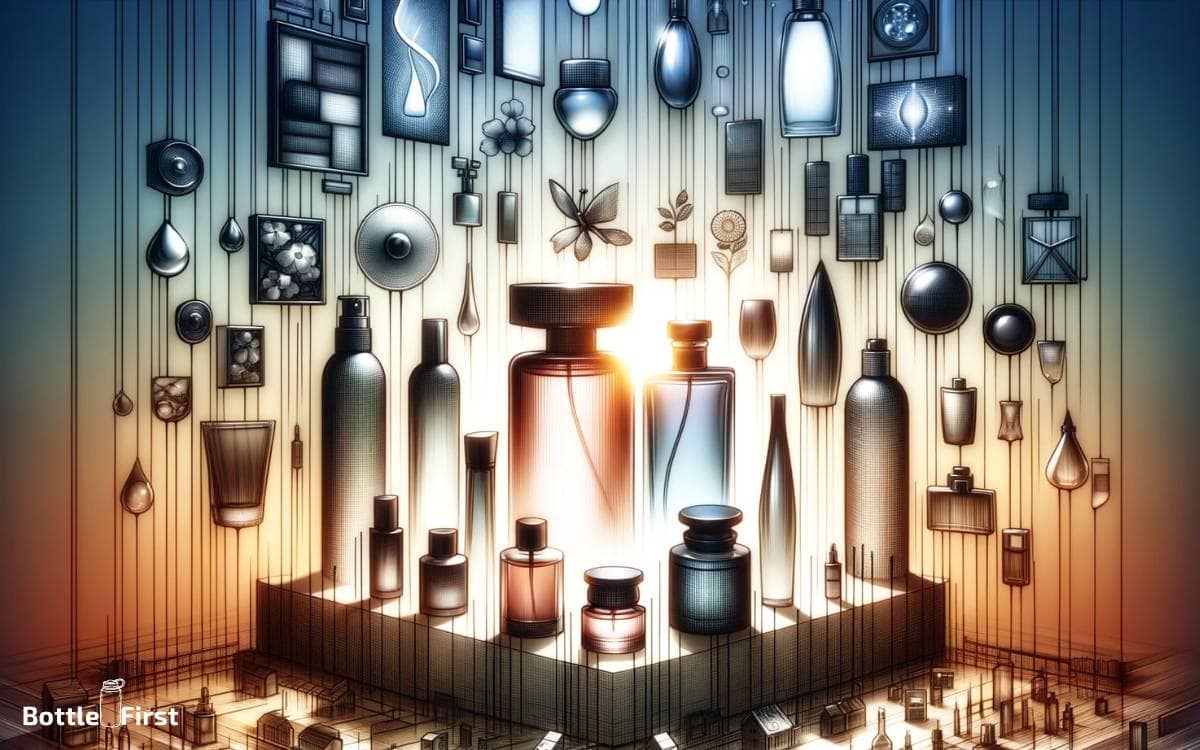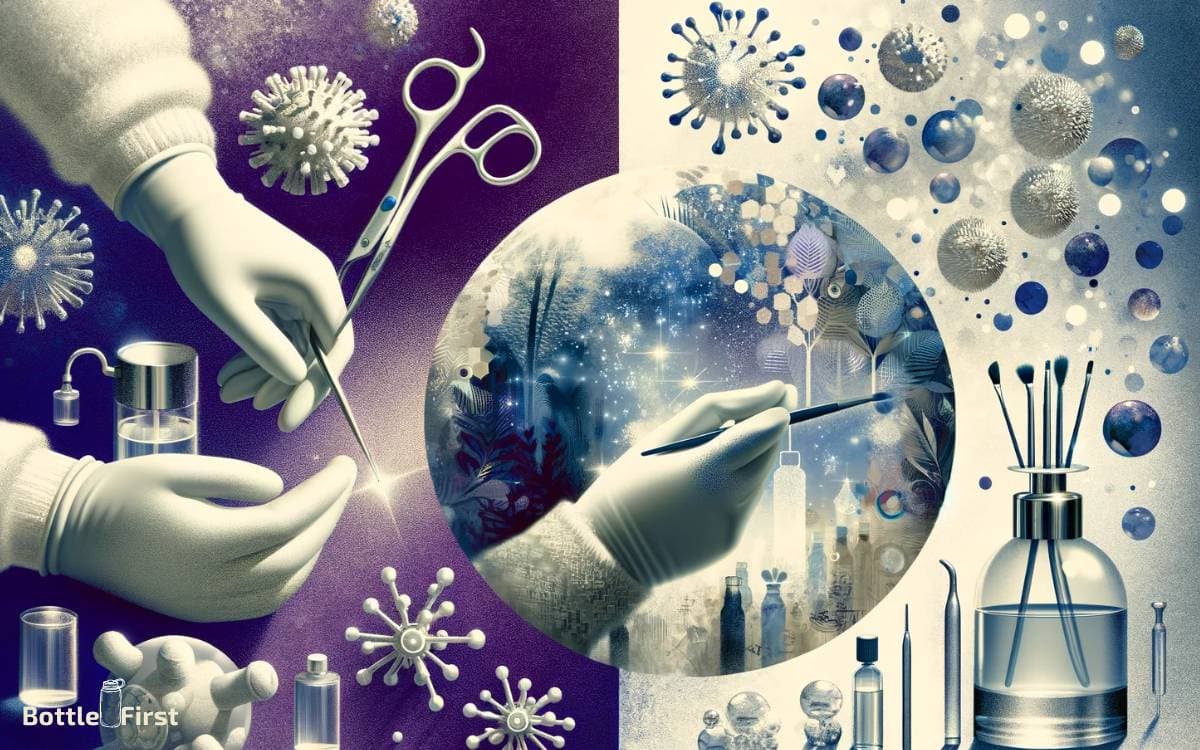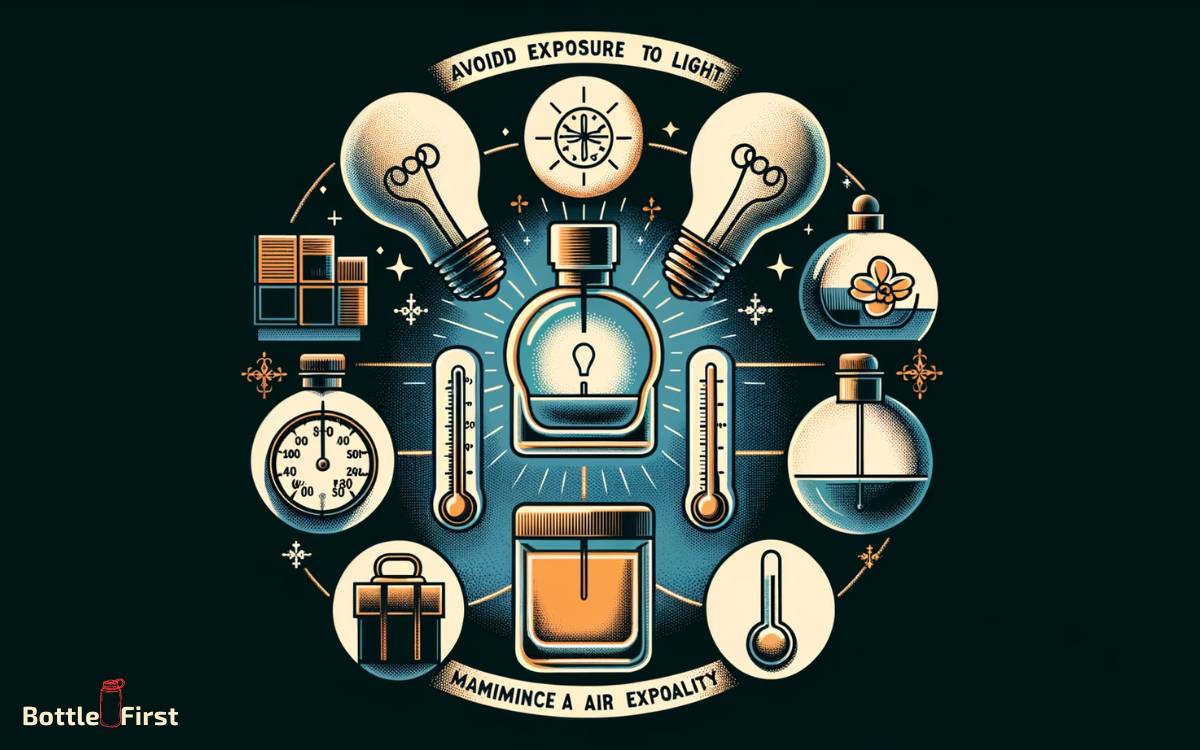Can You Spray Perfume into Another Bottle? Explained!
Transferring your cherished fragrance to a different bottle is indeed achievable. To ensure the essence remains true to its original scent, careful consideration of the bottle material and transfer technique is vital.
The steps to accurately relocate your perfume involve choosing an appropriate vessel, employing precise tools, and understanding the importance of an airtight seal. Uncover how to maintain the integrity of your perfume through proper transfer methods.
By following these guidelines, you can successfully transfer your perfume to a new container without compromising its quality.
Efficiently transferring perfume ensures your signature scent is always within reach, regardless of the bottle it’s housed in.
Key Takeaway
Understanding Perfume Composition
You can understand perfume composition by examining its key ingredients and their proportions.
The scent of a perfume is created through a carefully balanced combination of top, middle, and base notes. The top notes are the initial impression of the fragrance, usually light and fresh, and they evaporate quickly.
The middle notes, also known as heart notes, make up the main body of the scent and emerge once the top notes fade.
Lastly, the base notes provide the depth and lasting power of the perfume, often rich and long-lasting.
Understanding the proportions of these notes in a perfume allows you to appreciate how different scents can be blended to create unique and complex fragrances.
Step 1: Choosing the Right Transfer Bottle
When selecting a transfer bottle for your perfume, consider the material and size to ensure compatibility with the fragrance.
The spray mechanism should also be taken into account to prevent any potential issues during the transfer process.
It’s important to choose a bottle that will effectively preserve the scent and allow for seamless transfer.
Material and Size
To transfer perfume into another bottle, start by selecting a transfer bottle made of glass or high-quality plastic that’s slightly larger than the original perfume bottle.
Glass bottles are ideal for preserving the fragrance and preventing any chemical reactions that may occur with plastic.
High-quality plastic bottles, such as PET or HDPE, are also suitable for transferring perfume, especially if you need a lightweight and travel-friendly option.
When choosing the right size, ensure that the transfer bottle has enough space to accommodate the perfume without overflowing.
A good rule of thumb is to select a transfer bottle that’s around 10-20% larger than the original perfume bottle to allow for easy pouring and to prevent spillage.
Spray Mechanism Compatibility
Select a transfer bottle that isn’t only compatible with the spray mechanism of the original perfume bottle but also large enough to accommodate the fragrance without spillage.
When choosing a transfer bottle, ensure that the spray mechanism is the same type (such as a screw-on or snap-on) to guarantee a proper fit. Some transfer bottles come with multiple cap options to accommodate different spray mechanisms.
Additionally, consider the tube length to ensure it reaches the bottom of the original perfume bottle, allowing you to extract every last drop of fragrance. It’s important to prioritize compatibility to prevent any potential leaks or damage to the perfume.
Step 2: Preparing the Transfer Process
Before you begin the transfer process, it’s crucial to choose a suitable transfer bottle that will preserve the integrity of the perfume.
Maintaining cleanliness and hygiene throughout the transfer process is essential to prevent contamination and preserve the scent.
Ensuring proper sealing techniques will help to maintain the fragrance’s quality and prevent any leaks during the transfer.
Choosing a Suitable Transfer Bottle
You will need a clean and empty bottle that’s slightly larger than the original perfume bottle for the transfer process.
When choosing a suitable transfer bottle, opt for one made of glass to prevent any interaction with the perfume and ensure its longevity. Look for a bottle with a tight-sealing cap or atomizer to preserve the fragrance and prevent leakage.
Additionally, consider a transparent or translucent bottle to easily identify the perfume inside. The size and shape of the transfer bottle should also allow for easy pouring or spraying of the perfume.
By selecting an appropriate transfer bottle, you can ensure a smooth and efficient transfer process while maintaining the integrity of the perfume.
Maintaining Cleanliness and Hygiene
To ensure cleanliness and hygiene in preparing for the transfer process, it’s essential to thoroughly clean and sterilize both the original perfume bottle and the transfer bottle before transferring the perfume.
Here’s how to maintain cleanliness and hygiene:
- Wash with Soap and Water: Clean both bottles with mild soap and warm water to remove any residue or dirt.
- Sterilize the Bottles: Use rubbing alcohol or a sterilizing solution to ensure the bottles are free from bacteria and germs.
- Air Dry Completely: Allow the bottles to air dry completely before transferring the perfume to prevent contamination.
- Work in a Clean Environment: Ensure the area where you’re transferring the perfume is clean and free from dust or other contaminants.
Following these steps will help maintain the cleanliness and hygiene of the transfer process, ensuring the quality of the transferred perfume.
Ensuring Proper Sealing Techniques
When sealing the transfer bottle, ensure a tight and secure closure to prevent any leakage of the perfume. Proper sealing techniques are crucial for maintaining the integrity and quality of the fragrance.
Here are some essential steps to ensure a successful transfer process:
| Sealing Technique | Description | Purpose |
|---|---|---|
| Check the bottle cap | Ensure it is tightly closed | Prevent leakage and evaporation |
| Inspect for any cracks | Examine the bottle for damages | Avoid contamination and loss of scent |
| Use a sealing tape | Wrap the cap with a sealing tape | Provide an extra layer of protection |
| Store in a cool place | Keep the bottle away from sunlight | Preserve the fragrance’s composition |
Following these sealing techniques will help you maintain the quality and potency of your transferred perfume.
Step 3: Executing the Perfume Transfer
Spray the perfume into the other bottle slowly and steadily to avoid spilling or wastage.
When executing the transfer, follow these steps:
- Hold the bottles close together to minimize the distance the perfume must travel, reducing the chances of spillage.
- Tilt the original bottle at a slight angle to ensure that the nozzle is fully submerged in the new bottle, allowing for an efficient transfer.
- Press the nozzle firmly and release the spray in controlled bursts to maintain accuracy and prevent overfilling.
- Monitor the level of perfume in the receiving bottle to prevent overflow and ensure that the desired amount has been transferred.
By following these steps, you can successfully execute the perfume transfer without any unnecessary spillage or wastage.
Once the transfer is complete, it’s important to store the transferred perfume properly to maintain its quality and longevity.
Step 4: Storing the Transferred Perfume
After transferring the perfume into the new bottle, you should store it in a cool, dark place to preserve its fragrance and quality.
Exposure to light and heat can degrade the perfume and alter its scent, so keeping it in a cool, dark environment is essential. Direct sunlight can cause the delicate compounds in the perfume to break down, leading to a change in the fragrance.
Additionally, fluctuations in temperature can affect the chemical composition of the perfume, potentially diminishing its longevity and overall quality.
Tips to Preserve Fragrance Quality
To preserve the quality of the fragrance, store the perfume in a cool, dark place away from direct sunlight and heat sources.
Here are some tips to help preserve the fragrance quality:
- Keep the bottle tightly closed to prevent air exposure, which can degrade the scent.
- Avoid storing perfumes in humid areas, as moisture can affect the fragrance composition.
- Consider using a perfume tray or drawer to shield the bottles from light and temperature fluctuations.
- Use the original packaging or opt for opaque containers to further protect the perfume from light exposure.
By following these tips, you can ensure that your fragrances maintain their quality and aroma for longer periods.
Benefits of Transferring Perfume
When transferring perfume to another bottle, you can extend its shelf life and make it more convenient for everyday use.
By transferring perfume to a smaller, travel-sized bottle, you can minimize its exposure to air and light, which can degrade the fragrance over time. This helps preserve the integrity of the scent and ensures that it maintains its original quality for longer.
Additionally, transferring perfume into a spray bottle can make it easier to apply and carry with you throughout the day.
This added convenience allows you to freshen up your fragrance whenever needed, whether it’s for a quick touch-up before a meeting or a spritz before heading out for the evening.
Conclusion
Congratulations! You’ve successfully transferred your favorite perfume into a new bottle, preserving its quality and ensuring longevity.
Did you know that 75% of people admit to feeling emotionally uplifted when wearing their favorite scent? By transferring your perfume, you’re not only preserving its fragrance but also boosting your mood and confidence.
Keep enjoying your signature scent and its uplifting benefits!









